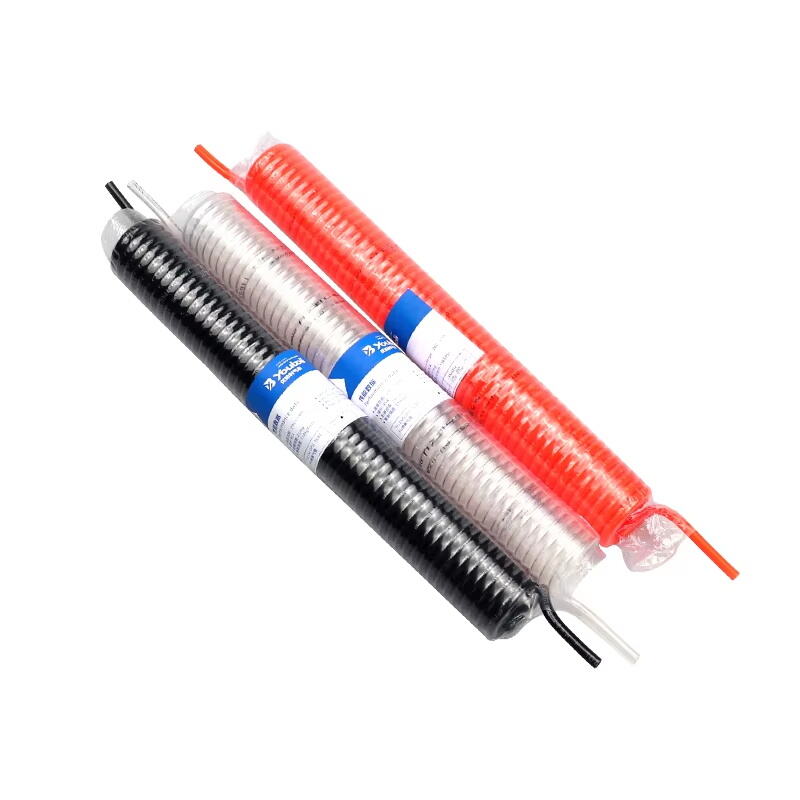Introduction
Imagine this: a factory technician needs to replace a hose on a critical machine. Seeing what looks like a suitable spare, they install it. Hours later, the hose fails catastrophically—not with a harmless hiss of air, but with a violent spray of hot, flammable hydraulic oil, causing costly downtime and a major safety hazard. This nightmare scenario underscores a critical truth: pneumatic and hydraulic hoses are not interchangeable. Using the wrong one is a recipe for failure, danger, and expense. Understanding the difference is fundamental for anyone working with fluid power systems. This definitive guide will dissect the key distinctions between pneumatic and hydraulic hose, empowering you to make perfectly informed choices that ensure safety, maximize efficiency, and protect your equipment investment.
Why It Matters: The High Stakes of Choosing Correctly
Selecting the right hose is not a mere technicality; it's a core aspect of system design and maintenance with direct consequences:
Safety First and Foremost: This is the paramount concern. A failed pneumatic hose might whip dangerously, but a burst hydraulic hose can inject toxic, hot fluid into the skin or create a severe fire hazard due to fluid spray on ignition sources. The extreme pressures in hydraulic systems make hose integrity non-negotiable.
System Performance and Reliability: The wrong hose can lead to pressure drops, flow restrictions, and premature failure. A pneumatic hose used in a hydraulic system will quickly bulge and burst. A heavy-duty hydraulic hose on an air system is overkill, adding unnecessary cost, weight, and rigidity.
Cost of Ownership: Unplanned downtime in industrial settings can cost thousands of dollars per hour. A hose failure halts production. Choosing the correct, durable hose for the application minimizes these risks and extends service life, providing a better return on investment.
Material Compatibility: Hoses are designed for specific media. Using a hose not rated for petroleum-based hydraulic oil will lead to internal degradation, contamination, and eventual system failure.
What Defines a Hose? Core Concepts and Construction
At a glance, hoses might look similar—a flexible conduit. But their internal design tells a different story.
Pneumatic Hose: Designed to carry compressed air or gas (like nitrogen). Its primary purpose is to transmit power and motion efficiently and cleanly.
Hydraulic Hose: Designed to transmit power by conveying pressurized fluid (typically oil) to actuators like cylinders and motors. It must handle not just pressure, but also fluid compatibility and temperature.
All hoses consist of three key layers:
Inner Tube: The core that carries the medium. Its material must be compatible with the fluid or gas.
Reinforcement Layer (Carcass): The strength of the hose. This layer, made of braided or spiral-wound fibers or wire, contains the pressure and prevents the hose from expanding or bursting.
Outer Cover: The protective shell. It guards the reinforcement from abrasion, weather, chemicals, and other external damage.
Head-to-Head: The Key Differences Between Pneumatic and Hydraulic Hose
H2: 1. Working Pressure Requirements
This is the most fundamental difference.
Pneumatic Hose: Typically operates at much lower pressures. Standard industrial compressed air systems usually run between 90-150 PSI (6-10 bar), though some specialized systems may go higher. Pneumatic hoses are built to contain these pressures with a safety margin.
Hydraulic Hose: Operates in a world of extreme pressure. It's common for hydraulic systems to operate at 2,000-5,000 PSI (140-350 bar) or even higher. Consequently, hydraulic hoses are built with significantly heavier, multiple layers of steel wire reinforcement to withstand these immense forces.
Insight: A pneumatic hose subjected to hydraulic pressures will immediately fail. It's like comparing a paper bag to a reinforced shipping container for holding heavy weights.
H2: 2. Media and Material Compatibility
Pneumatic Hose: The inner tube is typically made from materials like PVC, polyurethane, or synthetic rubber. Its main job is to be smooth for efficient airflow and resistant to mild moisture and contaminants found in air lines.
Hydraulic Hose: The inner tube is almost always made of oil-resistant synthetic rubber (like NBR - Nitrile Butadiene Rubber). It must be specifically compatible with petroleum-based oils, synthetic fluids, and additives to prevent the tube from softening, cracking, or dissolving, which would contaminate the entire hydraulic system.
H2: 3. Construction and Reinforcement
-
Pneumatic Hose: Often has a single layer of textile braid (e.g., polyester) for reinforcement. This is sufficient for containing lower air pressures and keeps the hose flexible and lightweight.
Example: A standard 1/4" pneumatic hose may have a working pressure of 300 PSI.
-
Hydraulic Hose: Has multiple, robust layers of reinforcement. This is often a braid or spiral of high-tensile steel wire. The number of wire braids (1, 2, or more) directly correlates to the pressure rating.
Example: A 1/4" hydraulic hose might have a 2-wire braid with a 4,000 PSI working pressure rating. SAE 100R2 is a common standard for medium-pressure hydraulic hose.
H2: 4. Size and Flexibility
Pneumatic Hose: Often measured by its outer diameter (OD). Flexibility is a key desirable trait for routing around machinery and connecting to tools.
Hydraulic Hose: Always specified by its inner diameter (ID). The ID must be correctly sized to maintain proper fluid velocity and prevent excessive pressure drop. While flexibility is still important, it is often stiffer due to the heavy wire reinforcement.
H2: 5. Cost and Lifespan
Pneumatic Hose: Generally less expensive per foot due to simpler construction and lower material costs.
Hydraulic Hose: Significantly more expensive due to the complex manufacturing process, high-quality oil-resistant materials, and multiple layers of steel wire reinforcement. Its lifespan is also heavily dependent on operating conditions like pressure spikes, temperature, and fluid compatibility.
How to Choose: A Step-by-Step Selection Guide
Never guess. Always use this checklist to select the right hose:
Identify the Application: Is it for air or hydraulic oil? This is your first and most critical filter.
Determine Maximum System Pressure: Always select a hose with a working pressure rating at least equal to, and preferably 1.25x, the maximum pressure of your system, including any pressure spikes or surges.
Check Media Compatibility: Confirm the hose's inner tube is rated for your specific medium (e.g., compressed air, petroleum-based oil, water-glycol, phosphate ester).
-
Select the Correct Size:
For Air: Choose based on OD and compatibility with your push-to-connect fittings.
For Hydraulics: Calculate the required ID based on flow rate (GPM or L/min) to ensure fluid velocity is between 4-15 ft/sec, minimizing turbulence and pressure drop.
-
Consider the Environment:
Abrasion: Does it need a tough, abrasion-resistant cover?
Temperature: Is the hose rated for your system's temperature range?
Chemicals: Could it be exposed to solvents, oils, or chemicals that could degrade the outer cover?
Pro Tip: For hydraulic systems, always refer to the hose's SAE standard (e.g., SAE 100R1, R2, R5, etc.). This standard defines the hose's pressure, impulse, and construction requirements, taking the guesswork out of selection.
The Consequences of Getting It Wrong: A Quick Checklist
-
Using a Pneumatic Hose for Hydraulics:
Catastrophic Failure: The hose will bulge and burst under pressure.
Safety Hazard: Risk of high-pressure fluid injection injury and oil spray.
System Contamination: Failed hose debris contaminates valves, pumps, and actuators.
-
Using a Hydraulic Hose for Pneumatics:
Overkill and Wasted Cost: You're paying significantly more for a hose you don't need.
Reduced Flexibility: The hose is stiffer and harder to route, making installations neater and more efficient.
Moisture Trap: The larger wire reinforcement can sometimes wick moisture, potentially leading to internal corrosion in air systems over time.
Conclusion: Choose with Confidence
While they may appear similar to the untrained eye, pneumatic hose and hydraulic hose are engineered for vastly different worlds. Pneumatic hose is a lightweight, flexible solution for transmitting air power. Hydraulic hose is a heavy-duty, high-pressure conduit for incompressible fluids. Understanding the critical differences in pressure, construction, and application is not just technical knowledge—it's essential for ensuring safety, reliability, and efficiency in your operations.
By following the guidelines in this article, you can confidently specify the correct hose, avoid costly mistakes, and keep your systems running smoothly.

